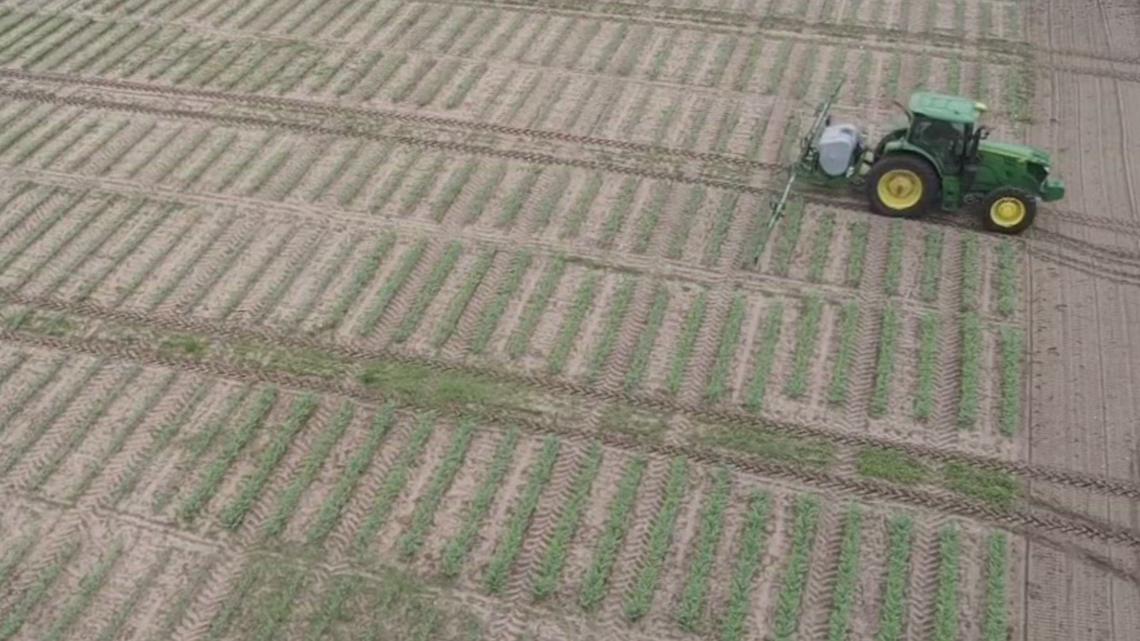New law to preserve working farm lands signed by Gov. McMaster
SC's McMaster signs farm preservation bill into law WLTX.com


South Carolina’s Working Agriculture Lands Preservation Act

The Working Agricultural Lands Preservation Act, also known as H.3951, was ceremoniously signed into law by South Carolina Governor Henry McMaster on Tuesday. This act aims to save family farms and address the issue of agricultural acreage being lost to development.
Working Farmland Protection Fund
The new law establishes the Working Farmland Protection Fund within the South Carolina Conservation Bank. This fund will assist landowners in preserving working agricultural land through voluntary conservation easements. The existing Conservation Bank board will be expanded to include the Commissioner of Agriculture, Secretary of Commerce, and Secretary of Transportation.
Sustainable Development Goals (SDGs)
The Working Agricultural Lands Preservation Act aligns with several Sustainable Development Goals (SDGs), including:
- Goal 2: Zero Hunger
- Goal 11: Sustainable Cities and Communities
- Goal 15: Life on Land
Benefits for Farmers and the Environment
South Carolina Governor McMaster emphasized the importance of protecting farmlands and ensuring the strength of the state’s agriculture industry. The Working Agricultural Lands Preservation Act provides farmers with a cost-effective option to preserve and pass down their family farms. This legislation also safeguards the state’s most precious natural resources from overdevelopment.
A report by the American Farmland Trust highlighted the high risk of future farmland loss in South Carolina. Between 2001 and 2016, over 280,000 acres of farmland were lost to conversion for commercial, industrial, and residential development. The Working Agricultural Lands Preservation Act aims to address this issue and protect farmland from further loss.
Eligibility and Criteria
Under the Working Agricultural Lands Preservation Act, landowners who derive at least half of their income from farmland are eligible for matching grants through the Working Farmland Protection Fund. The South Carolina Conservation Bank will use specific criteria to determine eligibility, including:
- The ability of the landowner to make the farmland available for lease or transfer to other farmers
- The threat of conversion of the farmland for non-agricultural purposes
- The classification of soils by the United States Department of Agriculture
- The presence of agricultural structures and improvements on the farmland
- The economic viability of the farmland in local, regional, and statewide markets
- The natural resource values associated with the farmland
- Whether the farmland is located in an underserved or underprivileged community
Support from Agriculture Commissioner
Agriculture Commissioner Hugh Weathers expressed his support for the Working Agricultural Lands Preservation Act, stating that it provides farmers with options to preserve their working lands. He emphasized the importance of protecting South Carolina’s agricultural past, present, and future while contributing to the economy and food production.
Although Governor McMaster’s signing of the act on April 23 was ceremonial, H.3951 officially took effect on March 11, 2024.
SDGs, Targets, and Indicators Analysis
1. Which SDGs are addressed or connected to the issues highlighted in the article?
- SDG 2: Zero Hunger
- SDG 11: Sustainable Cities and Communities
- SDG 15: Life on Land
The article discusses the loss of agricultural acreage to development and the need to preserve working agricultural land. This aligns with SDG 2, which aims to end hunger, achieve food security, improve nutrition, and promote sustainable agriculture. It also connects to SDG 11, which focuses on making cities and human settlements inclusive, safe, resilient, and sustainable. Additionally, the preservation of agricultural land contributes to SDG 15, which aims to protect, restore, and promote sustainable use of terrestrial ecosystems.
2. What specific targets under those SDGs can be identified based on the article’s content?
- Target 2.4: By 2030, ensure sustainable food production systems and implement resilient agricultural practices that increase productivity and production.
- Target 11.3: By 2030, enhance inclusive and sustainable urbanization and capacity for participatory, integrated, and sustainable human settlement planning and management in all countries.
- Target 15.1: By 2020, ensure the conservation, restoration, and sustainable use of terrestrial and inland freshwater ecosystems and their services.
The article highlights the need to preserve working agricultural land through voluntary conservation easements. This aligns with Target 2.4 under SDG 2, which aims to implement resilient agricultural practices that increase productivity and production. The establishment of the Working Farmland Protection Fund and the expansion of the Conservation Bank board also contribute to Target 11.3 under SDG 11, which focuses on sustainable urbanization and human settlement planning. Additionally, the preservation of agricultural land supports Target 15.1 under SDG 15, which aims to ensure the sustainable use of terrestrial ecosystems.
3. Are there any indicators mentioned or implied in the article that can be used to measure progress towards the identified targets?
- The threat of conversion of working farmland property
- The percentage of soils classified as prime farmland, unique farmland, farmland of statewide importance, and farmland of local importance
- The economic viability of the working farmland property
- The multiple natural resources values associated with the working farmland property
- Whether the working farmland is located or serving in an underserved or underprivileged community
The article mentions several indicators that can be used to measure progress towards the identified targets. These indicators include the threat of conversion of working farmland property, the percentage of soils classified by the United States Department of Agriculture, the economic viability of the working farmland property, the multiple natural resources values associated with the working farmland property, and whether the working farmland is located or serving in an underserved or underprivileged community. These indicators can help assess the effectiveness of the Working Agricultural Lands Preservation Act in preserving agricultural land and promoting sustainable agriculture.
SDGs, Targets, and Indicators Table
| SDGs | Targets | Indicators |
|---|---|---|
| SDG 2: Zero Hunger | Target 2.4: By 2030, ensure sustainable food production systems and implement resilient agricultural practices that increase productivity and production. | – The threat of conversion of working farmland property – The economic viability of the working farmland property |
| SDG 11: Sustainable Cities and Communities | Target 11.3: By 2030, enhance inclusive and sustainable urbanization and capacity for participatory, integrated, and sustainable human settlement planning and management in all countries. | – The threat of conversion of working farmland property – Whether the working farmland is located or serving in an underserved or underprivileged community |
| SDG 15: Life on Land | Target 15.1: By 2020, ensure the conservation, restoration, and sustainable use of terrestrial and inland freshwater ecosystems and their services. | – The percentage of soils classified as prime farmland, unique farmland, farmland of statewide importance, and farmland of local importance – The multiple natural resources values associated with the working farmland property |
Behold! This splendid article springs forth from the wellspring of knowledge, shaped by a wondrous proprietary AI technology that delved into a vast ocean of data, illuminating the path towards the Sustainable Development Goals. Remember that all rights are reserved by SDG Investors LLC, empowering us to champion progress together.
Source: wltx.com

Join us, as fellow seekers of change, on a transformative journey at https://sdgtalks.ai/welcome, where you can become a member and actively contribute to shaping a brighter future.







